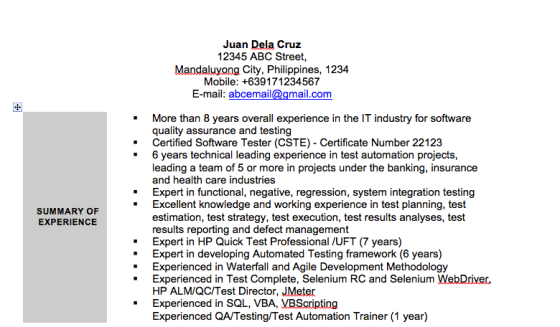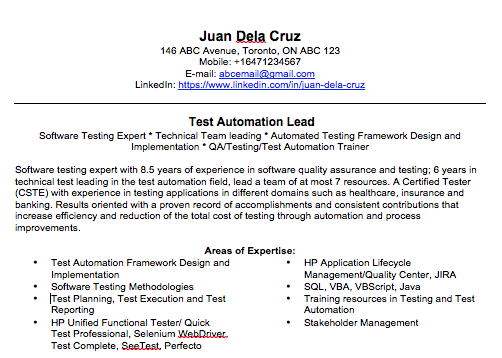I have been very blessed and of course extremely lucky to have secured a full-time job 3 days before landing in Canada and to add a cherry on top, this job is the same job I have been doing for 8.5 years.
It was not easy. I tried applying for jobs even before entering the Express Entry hoping that a Canadian company will take notice of my resume and hopefully offer me a job which will boost up my points. It did not happen until 3 days before our flight.
Before entering the Express Entry, I prepared my resume, the same old resume that got me jobs not just in the Philippines but also in Singapore. At that time, I had great faith that this resume will outshine other applicants in a job I am applying for and will land me a job in Canada but it didn’t. What I usually get, if I’m lucky, is a reply from a job application stating, “We have considered your skills and we regret to inform you that we decided to pursue other candidates blah blah blah.” Seriously, I always stop reading after the “regret” word and wished that they didn’t reply at all, just so I have that tiny hope that they are going through my resume and they are just thinking how much salary to offer me. I was quite hopeful during those times.
My personal statistics is out of 10 applications, 1 will give me the “regret” reply, 9 of them will just ignore me. So after months of applying, a year in fact, I convinced myself that I won’t get a job unless I’m already in Canada, or so I thought.
Two months before landing in Canada, I reached out to a firm called JVS Toronto (https://www.jvstoronto.org/pre-arrival/canprep/) for their CanPrep program. Just a disclaimer, this is not in any way an advertisement for them, but they did help me a lot. This is a free service for soon-to-be migrants to help them get a job through a series of trainings and one on one meetings with a career coach. One thing that helped me a lot is the training in resume building. So yes, the secret, if you want to call it that, is your resume.
It turned out that my resume is not tailor-made for the Canadian job market even though it looked very good for the Asian market. You can check google on how to create one and I’ll be showing you an excerpt of my before and after resume.
I am in the IT industry doing software automated testing. Before, my resume looks like this:

After taking the online training and doing some research, it now looks like this:

What I did basically was to let the hiring manager know what I can offer in ten seconds by simplifying my resume. All my accomplishments, education and professional experience are just supporting details. I also put my Canada address and a Canadian mobile number. I used Spikko’s (https://secure.spikko.com/) services for this one.
As soon as I did the changes, my stats became 1 interview request per 20 applications. For me, it is not bad since I’ve spent almost 1 year of countless hours looking at job boards and more than 200 applications for possible jobs without getting any interview requests. Getting at least 5% chance securing an interview is already heart warming.
I’m not an expert in job hunting nor creating a sellable resume, but based on my experience, the points below worked for me.
- Tailor made your resume to the Canadian job market (if possible, per company and job description). Don’t lie about any of the content.
- Look hard enough for job openings and you must be willing to spend at least an hour weekly to browse through different online job boards (if you have network in Canada, try to connect with them, most job openings are not posted online and can be applied through referrals)
- Most importantly, pray. It makes the difference.
